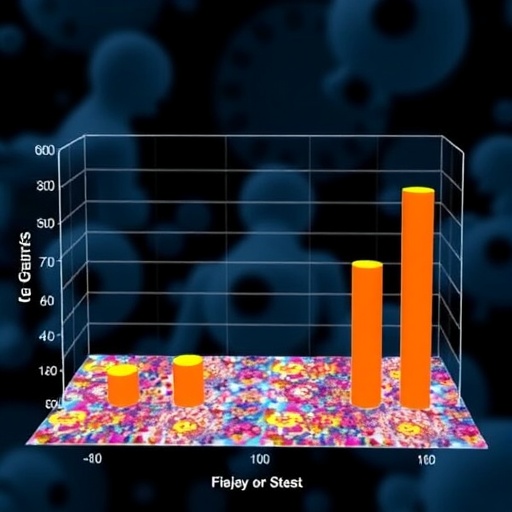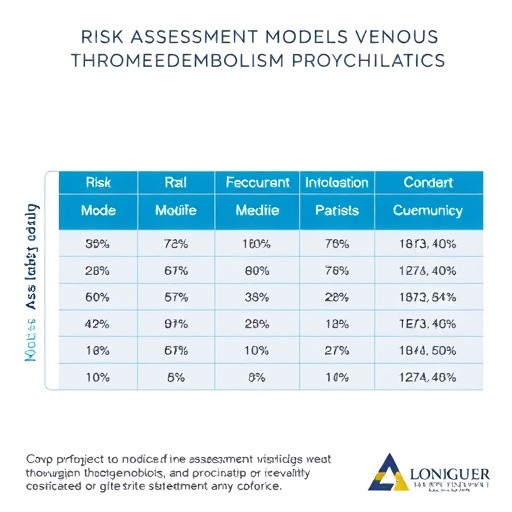In a groundbreaking new study set to transform our approach to public health, researchers have harnessed the power of advanced microsimulation to unravel the complex interplay of risk factors contributing to major illnesses in England from 2023 to 2043. This expansive investigation delves deep into the projected health landscape of a nation, employing cutting-edge computational models that simulate individual and population-level health trajectories. The findings promise to redefine how we understand disease emergence and progression, offering policymakers a robust tool to strategize preventive interventions and optimize healthcare resource allocation.
The study, led by Head, Raymond, and Rachet-Jacquet, pioneers a forward-looking analysis by focusing on the real-world impact of lifestyle, environmental, and genetic risk determinants on the incidence of critical diseases over two decades. By simulating myriad scenarios, the researchers have mapped a nuanced portrait of England’s future morbidity patterns, revealing how converging risk factors could influence the epidemiology of illnesses such as cardiovascular disease, cancer, and respiratory disorders. The resulting projections are invaluable for anticipating healthcare demands in an aging and increasingly diverse population.
Central to the research is the utilization of microsimulation—a sophisticated method that models the health experiences of individuals within a synthetic population, mirroring demographic and behavioral heterogeneity. This approach surpasses traditional epidemiological studies by capturing the dynamic interplay of risk exposures and health outcomes over time. Through iterative computational runs, the model integrates extensive datasets encompassing socioeconomic status, smoking prevalence, physical activity, body mass index, and other critical variables, thereby capturing their cumulative and interactive effects on disease risk.
One of the study’s standout revelations is the differentiated role that specific risk factors play in driving disease burden. Whereas some factors, like smoking cessation, are projected to yield significant reductions in certain illnesses, the persistence or emergence of others, such as obesity, poses formidable challenges. The microsimulation framework elucidates how the interplay between these risks can amplify or mitigate health outcomes at the population level, highlighting the need for multifaceted public health strategies that address multiple determinants simultaneously.
Importantly, the research sheds light on the temporal evolution of risk factor prevalence and their consequent health impacts. For instance, changes in smoking rates, physical inactivity, or dietary patterns will not immediately manifest in altered disease rates but rather influence morbidity trends over years and decades. This latency underscores the importance of sustained and consistent public health initiatives. The microsimulation model quantifies these temporal lags, providing an evidence base for long-term investment in health promotion.
Beyond its epidemiological insights, the study also incorporates socioeconomic dimensions, revealing disparities in disease risk across different population subgroups. By simulating individual-level risks stratified by income, education, and geographic region, the model exposes entrenched inequalities that may widen unless actively addressed. These findings offer a clarion call for policies that target social determinants of health alongside behavioral risk factors to achieve equitable improvements in population health.
The researchers have also explored hypothetical intervention scenarios, assessing the potential impact of modifying specific risk factors on future disease incidence. Simulations suggest that targeted reductions in smoking, improved physical activity, and better management of obesity could collectively avert a substantial proportion of anticipated illnesses. The quantification of these effects provides a compelling argument for integrated, multisectoral public health policies.
Underpinning the modeling effort is an impressive integration of diverse data sources, ranging from national health surveys and cancer registries to mortality statistics and demographic projections. This data-rich foundation enhances the model’s fidelity and predictive accuracy, enabling the capture of realistic population dynamics and health transitions. The researchers meticulously calibrated their simulation parameters, validating output against historical trends to ensure reliability.
The study’s temporal horizon until 2043 offers a visionary glimpse of health futures, enabling stakeholders to assess the long-term consequences of present-day decisions. By encompassing a 20-year window, the research transcends typical short-term analyses, accommodating the slow-moving dynamics of chronic disease development. This expansive timeframe is crucial for fostering resilient health systems capable of adapting to evolving challenges.
Crucially, the microsimulation framework developed in this study is adaptable and extensible. It can incorporate emerging risk factors, new medical treatments, or shifts in demographic patterns, making it a living tool for ongoing health forecasting. The transparency and scalability of the model empower public health authorities to customize analyses to local contexts or specific population segments.
This transformative work also raises awareness about the interconnectedness of health determinants, emphasizing that isolated interventions may falter without comprehensive strategies that span behavior, environment, and social policy. The layered complexity unveiled by the microsimulation underscores the necessity for collaboration across sectors, including healthcare, urban planning, education, and economic policy.
As England faces mounting pressure from an aging population and the persistent burden of non-communicable diseases, the insights provided by this study are both timely and actionable. Proactive use of such predictive tools could catalyze a paradigm shift from reactive healthcare to preventative, precision public health. By anticipating disease patterns years in advance, policymakers and practitioners can align resources, optimize service delivery, and ultimately improve population wellbeing.
The future-facing methodology also lends itself to international application, offering a template for other countries grappling with complex health landscapes. The interdisciplinary nature of the microsimulation demands collaboration among epidemiologists, statisticians, data scientists, and policymakers, fostering a new era of integrated health research that bridges the gap between data and decision-making.
It is worth noting that while the model makes assumptions inherent to all simulations, such as stability in certain behavioral trends, the researchers have incorporated sensitivity analyses to test robustness. These analyses reveal how uncertainties in inputs may influence projection outcomes, reinforcing confidence in the model’s practical utility while acknowledging inherent limitations.
In sum, this landmark study by Head et al. represents a tour de force in health forecasting. It deftly combines methodological innovation with substantive public health relevance, providing a powerful lens through which to examine and influence the trajectory of major illnesses in England over the next two decades. The microsimulation approach delivers a rich, data-driven narrative that is poised to inform targeted interventions, reduce health disparities, and enhance population resilience in an era of unprecedented health challenges.
This work ultimately signals a new frontier in disease prevention, where predictive modeling guides real-world action. As health systems worldwide seek to adapt to demographic shifts and evolving risk environments, tools like those developed in this study will become indispensable assets. Harnessing the power of simulation and empirical data offers a promising pathway toward healthier, longer lives for all.
Subject of Research: Microsimulation modeling of risk factors and their contribution to major illnesses in England from 2023 to 2043.
Article Title: Exploring the contribution of risk factors on major illness: a microsimulation study in England, 2023-2043.
Article References:
Head, A., Raymond, A., Rachet-Jacquet, L. et al. Exploring the contribution of risk factors on major illness: a microsimulation study in England, 2023-2043. Nat Commun 16, 9402 (2025). https://doi.org/10.1038/s41467-025-64820-1
Image Credits: AI Generated
DOI: https://doi.org/10.1038/s41467-025-64820-1
Tags: aging population health demandscancer epidemiology in Englandcardiovascular disease risk factorsdisease prevention strategiesenvironmental determinants of healthfuture health projections Englandgenetic influences on morbidityhealthcare resource optimizationlifestyle impact on diseasemicrosimulation in public healthrespiratory disorders projectionsrisk factors for major illnesses





